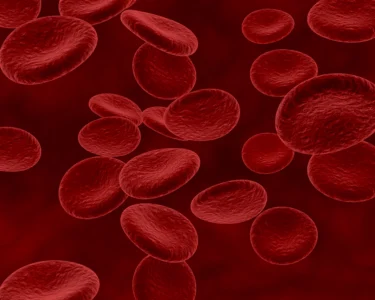Dates are a popular type of fruit that have been around for a long time. The origin of dates can be traced back to almost 5320 BC. The fruit is a staple item for people in the Middle East and North Africa and is mainly cultivated in these regions1.
Dates are believed to be highly beneficial for the body due to their rich composition of macronutrients and many other healthy elements. To reap their health benefits, they should be included in your diet and there are many simple ways to do this.
In this article, we will be discussing about the nutrient profile and the potential health benefits of dates. We will also be discussing some date recipes which can help you incorporate dates into your routine diet.
Dates are basically tropical fruits that are grown on date palm trees. Scientifically known as Phoenix Dactylifera, they are proposed to be one of the healthiest fruits in the world. Dates are categorized as dry fruits and have been an important part of West Asian heritage.
The nutrition data of dates is power-packed. The fruits are packed with a lot of essential vitamins and other nutrients that can be extremely helpful to your overall health. When it comes to nutrition, their high fibre and carbohydrate content undoubtedly make them one of the healthiest dry fruits1.
Nutritional Value per 100g of dates:
These values may differ from variant to variant.
Dried or fresh dates are both very good sources of vitamins including B1, B2, B3, and B5. These are all essential vitamins that are required to maintain the optimum health of your body.
Thus, the high nutrient content of the fruit contributes to its highly beneficial properties.
In this section, we will be discussing the various benefits that dates may have for your health.
Dates are popular for providing energy to the body all through the day. This is because of their high calorie and natural sugar content. 100g of dates provide about 314 kilocalories of energy, making them a great source of energy boost1. The dry fruit version of dates is even richer in calories than the fresh fruit.
While much of this energy is in the form of sugars (like fructose and glucose), it has ample amounts of fibre and a low glycaemic index. This means that 2-3 dates at a time can be a safe source of low-fat energy even for diabetics.
The fibre content in dates fruit is extremely high, this can be highly beneficial to people who are suffering from health issues caused due to irregular bowel movements. Dates can help in regularising bowel movements when consumed daily. They can aid your digestive health and help you lead a healthy life. Therefore, it can be conclusively said that the date’s benefits on your overall diet are unparalleled2.
Inflammation is a reactive mechanism of the human body that helps fight against several diseases, trauma, and infections. The regulation of inflammatory agents plays a crucial role in maintaining the overall health of the patient. Dates are rich in compounds known as antioxidants that help fight inflammation in the body3.
When compared to other dried fruits in the same category, dates top the chart with the highest concentration of antioxidants. Dates are rich in antioxidants including:
These antioxidants are effective in reducing inflammation within the body and therefore help avoid the risk of several diseases.
Inflammatory cytokines such as Interleukin can be extremely dangerous to your brain. The increased presence of IL-6 (Interleukin 6) is attributed to the development of neurodegenerative diseases such as Alzheimer’s disease.
The regular use of dates has been found to be beneficial in reducing the IL-6 levels and thereby helping in reducing the risk of developing brain degenerative conditions such as Alzheimer’s. An in-vivo study4 on mice has also shown that the inclusion of date palm in the feed leads to the reduction of amyloid beta-protein activity which can reduce the production of plaques that can harm the brain. Plaques are highly dangerous and can lead to cell death causing severe conditions such as Alzheimer’s. The study4 also showed that consuming dates reduces issues related to anxiety disorder and also helps in boosting memory and learning.
The effects regular consumption of dates can have on your neural health are many. Dates are rich in nutrients such as potassium which is very beneficial for your neurological health. So, besides preventing degenerative diseases such as Alzheimer’s, dates can also help in the overall improvement of your brain and nervous system.
Eating dates benefits women as it is believed to increase the likelihood of natural labour, reducing the complications associated with caesarean deliveries. Some studies5 suggest that incorporating dates into a pregnant woman’s diet can help lower the pressure during childbirth owing to specific compounds present in dates that mimic oxytocin, facilitating healthy contractions. Additionally, the high tannin content in dates aids in the labour process, making it smoother and more comfortable for women. These date benefits in pregnancy make them a valuable addition to a pregnancy diet.
Dates have a compound called beta D-glucan which is advantageous in promoting anti-tumour activity within the body. The high concentration of antioxidants in dates also helps in reducing the activities of free radicals (elements that can cause cancer) and thereby reduce the risk of cancer occurrence3. Thus, daily consumption of dates may have a positive effect for avoiding cancer risks.
Bacterial infections are usually discomforting and can sometimes become dangerous also. Antibiotics are the mainstay for treating bacterial infections.. However, natural remedies like dates may also help alongside. A study12 conducted using extracts from the pits and leaves of date revealed that it had active resistance against certain harmful bacteria. It was found that dates can be beneficial against deadly microbes such as E. coli and pneumonia. But do remember to speak to your healthcare advisor before doing any treatment on your own.
Diabetes Mellitus is one of the most common diseases around the world. Diabetes is treated using a combination of several oral medicines and insulin supplementation.
It is proposed that dates have the ability to increase the production of insulin and also have several properties that can help reduce the rate of absorption of glucose from the intestine. This can help in reducing the risk that is posed by diabetes. The reduction of glucose absorption helps lower blood glucose levels that are beneficial for people suffering from diabetes6. The exact mechanism of how dates help in reducing the effects of diabetes is still being researched upon. Thus one should consume them within limits as prescribed.
Dates have various properties that can help your kidneys stay healthy in difficult circumstances. It is found that some varieties of date fruit can actively reduce the lesions caused by nephrological disorders. Date extracts can also help reduce excess plasma and creatinine in the kidney that improves the overall health of kidneys2.
There are various vitamins and minerals present in the fruit which can help in improving the sperm count and also in increasing sexual libido in males. The microelements that are constituents of date palm such as estrone and sterols, may play a role in improving male fertility3. Date pollen extracts are also studied widely for their positive effects on male sperm motility and count.
Dates are highly rich in micronutrients such as selenium, manganese, magnesium and copper7. These micronutrients help in the development of your bone health. Dates can be an important supplement to your diet if you are suffering from bone problems. The micronutrients in dates may also help in dealing with bone conditions such as osteoporosis. So, including dates as a part of your diet can be beneficial for your bones.
Dates are a very good alternative to harmful chemicals found in skincare products. The high concentration of vitamin C and vitamin D in dates ensures that your skin receives all the nourishment required for healthy glowing skin. Vitamin C & D works for the improvement of your skin’s elasticity which is very hard to maintain as you age.
The nutrients present in dates, are helpful in improving your skin health and making you look younger for a longer period of time8. Dates are also useful in maintaining a healthy balance of melanin in your skin by reducing the chances of it being deposited in various locations.
Dates are believed to be beneficial for hair loss possibly due to their high iron content. The increased iron content in dates helps in maintaining the blood flow to the scalp and providing the required nourishment9. The increased flow of oxygen to your scalp can facilitate the growth of new hair and possibly also reduce the rate of hair fall.
Excessive alcohol use can have a major effect on your productivity. There are various products that are used to counter alcohol-induced hangovers. Although not conclusively proved, it’s traditionally believed that soaked dates may help reduce the effects of inebriation and hangovers. It is seen in many tribal communities that date palm extracts are added to beer to reduce the intoxicating effect it has.
Dates are rich in vitamin A and their regular consumption may help protect your eyes from conditions like night blindness in the long run. Date palms are one of the oldest natural medicines that is used in traditional medicine forms to heal problems arising out of vitamin A deficiency, managing eye issues being one of them.
Substituting white sugar with dates that are turned into a paste can make your meal sweet and healthy as well as help your mange your weight at the same time. The high content of fructose in dates provides a caramel-like sweetness in the fruit. So, you can replace a lot of processed sugar in your diet by some natural date paste. Plus, dates have ample amounts of fibre and a low glycaemic index which are beneficial for weight management10. But remember to consume in moderation else they can have an opposite effect.
In some studies11, consuming dates regularly is compared with taking iron supplements for managing anaemia. The results showed that dates can be used to deal with anaemia by increasing the iron content in haemoglobin. This may help solve a problem with taking iron supplements regularly for anaemia as these supplements tend to cause gastric disturbances. While this is not one of the generalized health benefits of dates, it does go to show that this superfood can be surprisingly useful.
Did you know that date palms are incredibly resilient trees? They possess an amazing ability to survive and thrive in harsh environments. Despite challenging conditions like extreme heat, aridity, and limited water availability, date palms have adapted to these circumstances and can still produce their delicious and nutritious fruits. It’s truly fascinating how nature equips these trees to flourish even in the most adverse of circumstances13!
Dr. Siddharth Gupta, B.A.M.S, M.D (Ayu)
In the below section, we will show you the magic dates can bring to your diet when used correctly.
Making a smoothie for breakfast is one of the easiest things to do. It adds enough nutrition to the body to get through the morning.
Ingredients:
Method of Preparation:
An oatmeal breakfast can keep you up and running for a considerable amount of time. Introduce a little date to it and you have a superfood on your plate.
Ingredients:
Method of Preparation:
Caramel candies are always a delight. Mix it with the nutrition and the excellent taste of Tahini dates and you have a healthy candy to munch on.
Ingredients:
Method of Preparation
Oranges are an excellent source of a bunch of natural vitamins. Combine it with dates and you have a highly nutritious drink that is extremely tasty.
Ingredients:
Method of Preparation:
This vegan bread is a healthy date snack and a flavourful breakfast choice. Thanks to the dates, this bread has a hint of sweetness and can serve to be the perfect appetizer with dates for people who do not enjoy consuming sweetened food.
Ingredients:
Preparation:
Experiment using the above recipes to create an appetite for dates and improve your overall health.
Fascinating fact: Dates have been a dietary staple for over 5,000 years in the Middle East and North Africa, providing essential nutrition and sustenance to communities in arid regions. These ancient fruits have played a vital role in ensuring food security and nourishment in challenging environments14.
Dr Rajeev Singh, BAMS
Dates can be highly beneficial for overall health. They are packed with nutrients that are essential for proper functioning of the body. Dates can easily be incorporated in your diet to soak in their health benefits. They can be consumed as is or blended with baked goods to provide a sufficient amount of energy to keep to you going throughout the day. But remember, dates have a high natural sugar content, so they should not be consumed in large quantities. It’s important for individuals with diabetes or those concerned about blood sugar levels to consult with a healthcare professional before incorporating dates in routine diet.
Dates are natural fruits that are high in fructose and sugar, which can make you fat. Yet, when consumed in moderation dates can actually help you in losing weight due to their high nutrition and fibre content, which can reduce your craving for fatty foods. But if you overeat dates, it can definitely make you put on a little more weight.
Glycaemic foods cause an increase in blood sugar, and using dates that are low on the glycaemic count instead can help in reducing the intake of glycaemic foods and maintain a healthy blood sugar level. But when consumed in large quantities, they may increase blood sugar levels. It’s best to discuss with your doctor before including them in your diet.
Dry dates are very hard to touch and need to be soaked in water for up to 5 hours to turn soft. You can then remove the seed easily and consume the pulp. Do not throw away the water yet as it gets infused with various nutrients and drinking it will ease digestion and constipation.
Dates are high in calories, and one must consume it in moderation. Eating too much of dates can cause stomach pain, bloating, diarrhoea and skin rash.
Dates at room temperature can last up to 3 months. When you keep them in the fridge, they retain quality and stay good for 6 and 12 months. If your dates are of the softer varieties, their shelf life will be shorter than those of the drier ones. For even longer storage, it is advised to always freeze the fruits to keep them good for longer.
Dates are typically not known to cause acidity for most individuals. However, in some cases, people with a sensitive stomach or acid reflux issues may experience discomfort if they consume dates in excess. It’s important to consult with a healthcare professional, who can provide personalized advice on dietary choices for those with specific digestive concerns.
Yes, dates can be beneficial for relieving constipation. They are high in dietary fibre, which can help soften stools and promote regular bowel movements when consumed as part of a balanced diet.
There is no scientific evidence to support the claim that eating dates can induce periods. Menstruation is a complex biological process influenced by hormones, and diet alone is unlikely to trigger or alter the menstrual cycle. If you have concerns about your menstrual cycle, it’s best to consult a healthcare professional for guidance.
Yes, dates can go bad if not stored properly. They have a limited shelf life, and factors like moisture and temperature can affect their quality. It’s essential to store them in a cool, dry place to extend their freshness.
Disclaimer: The information provided here is for educational/awareness purposes only and is not intended to be a substitute for medical treatment by a healthcare professional and should not be relied upon to diagnose or treat any medical condition. The reader should consult a registered medical practitioner to determine the appropriateness of the information and before consuming any medication. PharmEasy does not provide any guarantee or warranty (express or implied) regarding the accuracy, adequacy, completeness, legality, reliability or usefulness of the information; and disclaims any liability arising thereof.
Sabja seeds, also called basil seeds, are widely known for their use in drinks and desserts, but these tiny black seeds have more to offer than you might expect! Sabja seeds are packed with health benefits compared to popular superfoods like flax seeds and chia seeds in their nutritional value. Extracted from sweet basil (distinct from holy basil, renowned for its immunity-boosting properties), sabja seeds are known as a wellness powerhouse.
Adding these mighty seeds to your diet can help transform your health. Here are the top health benefits of sabja seeds.
Friendly Reminder: The information shared here is for educational purposes only and the reader should consult a registered medical practitioner before implementing any changes to their health routine.
Drinks containing sabja seeds may provide relief from summer heat. Sabja seeds are known to reduce body heat and have a soothing effect on the stomach. These seeds can be part of various drinks like lemonades, coconut water, coconut milk, milkshakes, fruit-based smoothies, yoghurt etc.
People with diabetes should be particular about what they eat in order to keep their blood sugar levels steady. Sabja seeds have been found to contain anti-diabetes properties[2].
Sabja seeds are rich in soluble fibre. When these seeds are added to our diet with a good quantity of water, they absorb water and thus help draw water to our gut. This results in the softening of stools and promotes daily bowel movement. Thus, people suffering from constipation may get relief by making sabja a part of their daily diet[1].
Sabja seeds contain pectin, among many other soluble fibres. Pectin is proven to have prebiotic benefits. It helps balance gut bacteria by boosting the growth of good bacteria, which also helps in relieving acidity to a great extent.
Sabja seeds are high in soluble dietary fibre and help a person feel full. They also help regulate our bowel movement and thus help in cleansing our body from toxins.
The soluble, fermentable fibre pectin helps increase satiety and reduce caloric intake and adiposity while on a high-fat diet[3]. It also produces a fermentation environment more likely to promote hindgut health. Reduction in calorie intake thus helps people on weight loss journey.
Sabja seeds are a rich source of iron, calcium and magnesium. Calcium and magnesium are required for the optimal functioning of muscles and bones[6]. Iron is needed to maintain haemoglobin levels, which is the protein required to transport oxygen in the blood[1].
Sabja seeds contain an average of 2.5 grams of fat per 1 tablespoon. Of this fat, about half – 1,240 mg per tablespoon – is alpha-linolenic acid (ALA), an omega-3 fat.
The beneficial effects of omega-3 fatty acids include effects on lipids, blood pressure, cardiac and vascular function, eicosanoids, coagulation, and immunological responses[5]. These are known to decrease the risk of coronary heart disease, hypertension, stroke and their complications.
Sabja seeds are a good source of plant chemicals like flavonoids and polyphenols [4]. Flavonoids are the largest group of phytonutrients, known for their anti-oxidative, anti-inflammatory, anti-mutagenic and anti-carcinogenic properties along with their capacity to modulate key cellular enzyme function.
Sabja seeds have proven anti-bacterial, anti-viral and anti-fungal properties[4]. They are helpful in healing mouth ulcers. They can also be used as a mouth freshener.
Pectin, a type of soluble fibre present in sabja seeds, may help lower the cholesterol levels in our body. It may reduce the absorption of cholesterol in our gut[1].
Sabja seeds have a calming effect on the body as well as the mind. They can be helpful for people dealing with stress, tension, and anxiety in addition to prescribed treatment and therapy.
Sabja seeds are rich in flavonoids, tannins and terpenoids. Their anti-oxidant activity is also shown to have memory-enhancing effects in some[1].
Soak around 2 teaspoons of sabja seeds in a cup of warm water for around 15 minutes. They swell and a translucent grey film coating develops around each black seed as they increase in size.
You can now make these seeds a part of a variety of drinks like lemonade, milkshakes, coconut water, smoothies, buttermilk, soups and so on. You can also add them to ice creams, pasta and salads for a nice crunchy taste.
Ideally, you should not consume more than 2 teaspoons of sabja seeds a day.
Also Read: 15 Amazing Health Benefits of Papaya Seeds That You Should Know!
Sabja seeds are a natural and vegetarian source of protein. You can consume these seeds daily to strengthen bones, muscles, and skin and to stimulate the production of enzymes, hormones and other body chemicals for better functioning of the body. However, if you have any medical condition, it is best to consult the doctor.
There’s no direct evidence linking sabja seeds to acne. However, excessive consumption might contribute to acne for some individuals due to potential hormonal effects or allergies. It’s best to consume them in moderation and observe reactions, if any.
Sabja seeds are believed to have a cooling effect on the body according to Ayurvedic practices. They are often used in drinks like falooda during hot weather to help cool down the body. However, scientific evidence supporting this specific claim is limited, and individual responses may vary.
Sabja seeds can aid in weight loss as they are high in fiber, which promotes feelings of fullness and helps control appetite. Additionally, their low-calorie content makes them a good addition to a weight loss diet. However, they should be consumed in moderation.
There’s no scientific evidence to suggest that sabja seeds can delay periods. However, some anecdotal claims and traditional practices exist. If you have concerns about menstrual irregularities, it’s best to consult with a healthcare professional.
Sabja seeds are generally considered beneficial for managing uric acid levels due to their anti-inflammatory properties. However, individual responses may vary, so it’s advisable to consult with a healthcare provider.
Disclaimer: The information provided here is for educational/awareness purposes only and is not intended to be a substitute for medical treatment by a healthcare professional and should not be relied upon to diagnose or treat any medical condition. The reader should consult a registered medical practitioner to determine the appropriateness of the information and before consuming any medication. PharmEasy does not provide any guarantee or warranty (express or implied) regarding the accuracy, adequacy, completeness, legality, reliability or usefulness of the information; and disclaims any liability arising thereof.
Pineapple is said to have originated from South America and is rich in nutrients and antioxidants that can fight inflammation. Also, known as Ananas comosus, this healthy fruit is said to have a lot of health benefits. It contains vitamin A, vitamin K, phosphorus, calcium, and zinc that can work wonders in fighting many diseases. It’s a rich source of vitamin C that helps in maintaining a healthy immune system while its content of manganese can help regulate the metabolic rate and aid digestion. This fruit may also have several benefits for your hair, skin, and bones. This blog will give you a detailed account of its proposed health benefits and any potential side effects. It will also cover some ways in which you can use pineapple to achieve healthy skin and hair. But before that’s have a look at some interesting facts about this fruit!
Here are some interesting facts that you should know about pineapple.
Pineapple is a low-calorie fruit (83 kcal per 165 g) rich in essential nutrients. It provides 21.6 g of carbohydrates (including 16.3 g of natural sugars) and 2.3 g of dietary fiber. It is an excellent source of vitamin C (79 mg, 88% DV) and manganese (1.5 mg, 67% DV), and also contains vitamin B6, thiamin, copper, folate, and potassium in moderate amounts1. This nutrient-dense profile makes pineapple a healthy and refreshing fruit choice.
Here are some proposed health benefits of pineapple that you need to know.
Pineapple may benefit if you are suffering from a bad cold and cough. This is because this healthy fruit contains bromelain, which is an enzyme that has anti-inflammatory properties and can help fight infections2. Eating it regularly can help build your immunity and avoid cough and cold.
Pineapple is rich in manganese, which helps in strengthening your bones3. Along with manganese, it also has other nutrients like zinc, copper and calcium which can support bone health. Thus, adding this fruit to your everyday diet can help you keep your bones strong and healthy.
Pineapple is said to strengthen your gums and keep your teeth strong. Studies4 have shown that bromelain found in pineapple helps fight harmful bacteria that cause gum disease. Plus, pineapple also has a good calcium and manganese content that help in strengthening the teeth. Consuming pineapple regularly can help you achieve healthy gums and teeth.
Pineapple is also proposed to keep cancer away. This fruit has loads of antioxidants in it that can protect you from a wide range of diseases and help avoid some types of cancers from occurring. Pineapple may also have the potential to damage cancer cells, although further research is needed in this regard5.
Pineapple is a rich source of bromelain, dietary fibre, and vitamin C that help in good digestion. Bromelain consists of proteolytic enzymes that help in proper break down and absorption of food, thereby aiding in digestion. Drinking some pineapple juice or eating it every day can thus help you get rid of stomach issues.
Regular consumption of 100% pineapple juice may help reduce your risk of macular degeneration which is a condition that affects the eye as you get older6. As this healthy fruit is a good source of vitamin C and several antioxidants, it can aid in keeping your vision intact.
Arthritis involves severe pain in the joints which is primarily caused due to inflammation7. Pineapple contains bromelain which is said to have a major anti-inflammatory property and all you need to do is to make pineapple juice and drink it. This will ease joint pain and prevent you from arthritis.
If you have potential risk factors for developing cardiovascular disease such as high cholesterol levels, then eating pineapples regularly can help. This fruit has high amounts of healthy nutrients and phytochemicals that can lower lipids and reduce inflammation8. This can be a good natural way to control your cholesterol levels.
Bromelain being the major substance in pineapples may help reduce your risks of blood clots, which can avoid plaque from building in the arteries3. There, incorporating pineapple in your routine diet can be beneficial for your blood circulation and heart.
Pineapple contains enzymes that can soothe the feeling of vomitting9. This is because of its bromelain content particularly, which can help deal with nausea, motion sickness and morning sickness of pregnancy. However, it’s important to discuss with your gynaecologist before incorporating anything to your diet, especially pineapple, during pregnancy.
Pineapple contains valine and leucine which are two substances that are very important for the growth and repair of muscle tissue. Drinking one glass of pineapple juice may benefit in overcoming fatigue and boosts your stamina to keep you running the whole day. The best thing about this fruit is that it can keep you hydrated the entire day and provide all the energy you would need to run yourself.
Pineapple has tryptophan, which helps in the production of serotonin which is a natural stress buster that keeps your hormones and nerves relaxed10. Thus, including pineapple in your routine diet can help beat the stress and keep your mood elevated.
Pineapples are rich in nutrients and antioxidants that have the ability to prevent diseases that your body is prone to. Aging and oxidative damage to the body can cause chronic inflammation and weaken your immune system. Pineapple has antioxidants that can boost your immune system and protect you from many diseases3.
According to some studies11, bromelain in pineapple has demonstrated positive effects on muscle fatigue due to exercise. It can help protect muscle from damage and inflammation and is, therefore, a great way to promote muscle recovery after a workout.
Similarly, the bromelain in pineapple has also been seen to be helpful to the body when it is recovering from surgical intervention12. Bromelain is a potent anti-inflammatory compound and was also approved in some European countries for both internal and topical use on surgical wounds to facilitate faster healing.
A recent study13 on rats has proven that pineapple does have an anti-obesity effect. According to the results of this study, raw pineapple juice has been seen to prevent the deposition of fat in rats that were put on a specific diet. Thus, pineapple may have a promising role in supporting weight loss by providing a delicious and nutritious food option with low calorie content and presence of digestion-promoting enzymes.
While studies13 have shown beneficial health effects of pineapple, further large-scale human trials are needed to confirm these. Nonetheless, studies of initial research seem promising and there is a good chance that consuming pineapple routinely can show several positive effects on health as discussed.
As discussed, pineapple is good for your overall health and similarly, it is also good for your skin and hair too. Pineapple extracts can help rejuvenate your skin. It may be helpful for conditions like skin rashes or skin damage, and make you skin look clean and fresh. It also helps keep your hair and scalp healthy.
Here are some potential benefits of pineapple for your skin and hair.
Pineapple extracts may help fight acne and other skin infections. Studies14 have shown that application of bromelain extracted from pineapple skin can be beneficial in fighting microorganisms causing skin infections and manging acne.
The older you get your skin begins to lose its glow and you will begin to develop wrinkles. Pineapple is a rich source of antioxidants and vitamin C that are said to boost skin elasticity and hydrate your skin15. Alpha-hydroxy acid in pineapple helps delay the death of cells, thus aiding in anti-ageing capabilities.
Pineapple has loads of vitamin C and antioxidants that can help deal with sun damage and uneven skin toning. Pineapple extracts can help exfoliate dead skin and flush away the toxins from your face, thus making your skin look vibrant and clean.
Pineapple may help reduce black spots on your face by rubbing it over the spots. A study16 involving long term application of pineapple extract cream showed that it helped in reducing pigmentation and dealing with conditions like dermatitis and greasy skin.
Pineapple contains antioxidants that are responsible for softer and shinier hair. Its vitamin C content deal with brittle and dull hair and also aids in improving the thickness and elasticity of your hair. Thus, pineapple can help in promoting strong, healthy and lustrous hair.
Pineapple has vitamin C that helps build collagen and makes your hair strong, potentially avoiding hair fall. The enzymes present in this fruit can also help improve blood circulation and enrich the hair follicles, thereby helping in new hair growth.
Pineapple extracts can help ease inflammation in your scalp. If you are suffering from severe itching on the scalp, applying this can give you instant relief. It may help deal with dandruff or inflammatory skin conditions such as dermatitis affecting the scalp and promote its health17.
Although natural remedies like applying pineapple and its extracts can help promote skin and hair health, if you’re suffering from any skin conditions or have symptoms such as itchy scalp or extensive hair fall, it’s ideal to consult a dermatologist first. They can help diagnose the underlying cause of your condition and suggest appropriate management strategy.
Pineapple ranks high in the list of foods rich in vitamin and mineral content. Vitamin C, that promotes the growth and repair of tissues, is present in pineapple in nearly one-third of the daily required quantity. Studies10 show people taking vitamin C regularly may be able to fight cancer, heart disease, and arthritis. Vitamin C is known to possibly strengthen your immune system as well.
Dr. Siddharth Gupta, B.A.M.S, M.D (Ayu)
Here are a few preparations that use pineapple to help you take care of your skin and hair.
Mash half a medium-sized pineapple with 2-3 tablespoons of yoghurt and olive oil until a smooth paste is achieved. Apply the mask by massaging it into your hair and leaving it in for about 20 minutes. The pineapple enzymes will help to nourish your follicles and give you with thick strong hair while the mix of olive oil and yoghurt can give your hair shine and help manage scalp irritation.
In a blender, mix gram flour, pineapple, and oatmeal till it reaches a grainy consistency, then apply to your face gently while slowly massaging in a circular motion. Do not leave the face mask on for more than 10 minutes. The mixture of pineapple for skin is an all-round facial care scrub. Pineapple and gram flour have been known be great for complexion, helping reduce dark spots and evening out the skin tone. The gram flour and oatmeal also work together to absorb excess facial oils while cleansing the skin surface.
Make a mash of pineapple and turmeric and apply to zits, pimples, and cuts on your skin. Due to Bromelain in pineapple, it helps in wound repair while turmeric helps reduce inflammation and aids in wound healing. Together ,these two ingredients can help your skin recover quickly while using natural ingredients.
Researchers believe pineapple provides a healthy serving of the vitamin B complex including thiamin, niacin, B6, and folate. These vitamins and minerals may assist your body in converting food into usable energy. Additionally, they are essential for the production of new red blood cells that carry oxygen to your organs and tissues3.
Dr. Rajeev Singh, BAMS
While pineapple has many potential health benefits, it may have some side effects too. These include:
Also Read: Best Home Remedies for Hair Growth
Pineapple is a nutrient-dense, multipurpose fruit, full of essential nutrients and antioxidants.
There are numerous proposed health advantages of pineapple, including improved digestion, increased immunity, and even lowering risks of certain cancers. It is found to be great for the skin and hair too! Although further studies are needed to confirm its health benefits, pineapple seems to show promising results and can be incorporated in routine diet. However, despite the benefits, consumption in moderation is key to prevent any side effects of pineapple. Also, if you have any medical conditions or are on certain medications, it’s best to discuss with your healthcare provider before including pineapple or any other food item in your routine diet.
Of course, consuming pineapples are good for your overall health, but this fruit must not be consumed in excess as it can lead to several health problems such as:
-Diarrhoea
-Vomiting and nausea
-Skin Rashes
-Excess menstrual flow
-Swelling in your cheeks and mouth
Note: Bromelain is a major substance that is found in pineapples and this has its merits and demerits probably if you do not consume this fruit in excess. So, make sure that you drink only one glass of pineapple juice every day and this will do you good.
Well, the answer is no because this can make you feel very uncomfortable if you do not have the habit of consuming pineapples for every breakfast. Make sure that you complete your breakfast and then consume some fresh pineapple juice and this would do you good. Consuming it on an empty stomach can result in acidity.
Pineapple may offer relief during periods due to its anti-inflammatory properties and bromelain content, which could help alleviate menstrual cramps. However, individual responses vary, and it’s essential to consider personal health and consult with a healthcare professional for personalized advice.
Pineapple can be included in a diabetic diet in moderation due to its low glycaemic index and high fibre content, which may help regulate blood sugar levels. However, it’s crucial for individuals with diabetes to monitor their carbohydrate intake and consult with a healthcare professional for personalized dietary recommendations.
No, pineapple thorns are not poisonous. The outer skin of a pineapple may have sharp spines, but they are not harmful if handled carefully.
Pineapple can be included in a kidney-friendly diet as it is low in sodium and provides essential nutrients. However, individuals with kidney issues should consult their healthcare provider or a registered dietitian to determine the appropriate amount based on their specific dietary needs.
While there’s no direct evidence that pineapple increases sex drive, its nutritional content, including vitamin C and manganese, can contribute to overall well-being, potentially indirectly supporting aspects of sexual health. However, individual responses vary, and lifestyle factors play a significant role in libido.
Yes, you can freeze pineapple. Cut it into bite-sized pieces, spread them on a tray to freeze individually, then transfer to a sealed bag or container for convenient, frozen pineapple whenever needed.
To determine if a pineapple is ripe, look for vibrant green leaves at the crown, a sweet aroma at the base, and a slightly firm texture with a little give when gently squeezed. Additionally, the golden colour at the base of the fruit can indicate ripeness.
While some believe pineapple may induce labour due to the enzyme bromelain, there is limited scientific evidence to support this claim. It’s essential to consult with a healthcare professional before attempting any natural methods to induce labour during pregnancy.
Pineapple juice may help reduce swelling due to its bromelain content, which has anti-inflammatory properties. However, it’s essential to consume it in moderation, and consulting with a healthcare professional is advisable for personalized advice on managing swelling.
No, pineapple leaves are generally not considered poisonous, but they are tough and indigestible. It’s crucial to avoid consuming them. For personalized health advice, consult with a healthcare professional.
No, pineapple eyes are not edible as they are tough and fibrous. It’s advisable to discard them before consumption. For personalized health advice, consult with a healthcare professional.
Disclaimer: The information provided here is for educational/awareness purposes only and is not intended to be a substitute for medical treatment by a healthcare professional and should not be relied upon to diagnose or treat any medical condition. The reader should consult a registered medical practitioner to determine the appropriateness of the information and before consuming any medication. PharmEasy does not provide any guarantee or warranty (express or implied) regarding the accuracy, adequacy, completeness, legality, reliability or usefulness of the information; and disclaims any liability arising thereof.
Gokshura, often known as Tribulus Terrestris is a tiny leafy Ayurvedic herb that belongs to the Caltrop family. Because the fruits of this plant resemble cow hooves, its name is derived from two Sanskrit words: ‘Go’ meaning cow, and ‘Aakshura’ meaning hoof1.
Gokshura, also known as Goksuraka, Gokhuri, Gokshra, Devil’s thorn, Goat head, Small Caltrop, Gokharu, or Gokhri is a vital element used to cure urinary diseases, polycystic ovary syndrome (PCOS), prostate gland problems, heart ailments and kidney problems. It may also aid in the development of muscle growth, increased and cognitive activity1.
The fruit bears sharp thorns over its surface that are hard enough to puncture a cycle tire, earning it the name Trikanta or Puncture Vine. This herb’s active components, alkaloids, and phytosterols combine to make it an effective diuretic. Apart from urinary issues, gokshura can possibly help with hair loss, neurological disorders, rheumatic pain, headaches, obesity, stress, piles, bedwetting, and eye problems.
Gokshura has active components, the most important of which are the alkaloids, norharman and Harman. It also contains terrestrosins A E, flavonoid glycosides, and furostanol, which are steroidal saponins.
In India, gokshura may be used in Ayurvedic medicine to treat asthma, edema, cough, and renal problems, as well as to aid with hair loss, rheumatic pain, headache/stress, menstruation, weak nervous system, obesity, piles, and eye problems. This herb has been discovered to have hypotensive, anti-microbial, anti-cancer, aphrodisiac, and diuretic qualities by researchers.
Gokshura is also known to have many medicinal properties2. These include-
Gokshura may be an extremely useful herb for many common ailments.
Urinary conditions such as urinary incontinence, painful urination, and burning sensation when urinating may benefit from the Gokshura churn. When gokshura is mixed with cow’s milk, it may relieve pain and burning micturition, it may also encourage proper urination and it may help dysuria since it is a mild diuretic3.
Antimicrobial and antibacterial characteristics of gokshura may help against urinary infections. Your doctor will be able to assess your condition and prescribe dosage and form correctly.
Consuming Gokshura at the recommended dosage may provide the body with nutrients and minerals essential for muscle strength, making it a natural approach to potentially building healthy muscles. As the available data seems insufficient we may need further studies that can give evidence for these benefits on humans.
In my opinion, Gokshura is a special plant with some fantastic benefits. An animal study8 looked into the effects of a special extract from Gokshura on different muscle preparations. The results show that this mixture may help reduce muscle spasms and ease colic pains.
Dr. Smita Barode, B.A.M.S, M.S.
The traditional Gokshura churn supports kidney health by assisting in the elimination of excess uric acid and managing the uric acid level in the kidneys, thereby preventing or curing gout.
The anti-lithiasis (against stone formation) properties of Gokshura churn may help against the production of kidney stones, as well as breaking or reducing the size of those that may have already developed4. It may also work against polycystic kidney disease, kidney stones, and cystitis. It may aid in the management of diabetes and hence may combat underlying symptoms such as frequent urination. You must consult with your doctor for better advice.
Gokshura churn may have digestive qualities and has been discovered to be particularly helpful in improving digestion. It may increase the absorption of important nutrients and improve digestion by stimulating the release of digestive juices.
It also addresses symptoms of stomach pain, distension, ulcerative colitis, and irritable bowel syndrome, as well as preventing fluid retention. We may need further studies that can give evidence for these benefits on humans.
The analgesic and anti-inflammatory characteristics of Gokshura may help in reducing pain and inflammation, and the churn can be used to benefit rheumatoid arthritis and osteoarthritis1. The studies available currently are insufficient and therefore more scientific evidence is needed to back up this claim.
Gokshura churn is a traditional medicine that may have a beneficial effect on brain function. The powerful antioxidants in gokshura may help people with their memory, attention, concentration, tranquility, and alertness.
Regular use of the powder has been studied to have a positive effect on memory, reasoning, problem-solving, and other cognitive capacities, as well as being particularly helpful for psychotic diseases such as Alzheimer’s disease. You must consult a doctor before including any herb in your diet for its skin benefits as they may be able to assess your condition and prescribe dosage and form correctly.
Owing to powerful antioxidative properties, the Gokshura churn may be helpful for a variety of heart conditions. It may strengthen the cardiac muscles and keep lipids and other debris out of the blood vessels, preventing atherosclerosis. The bioactive ingredients in gokshura may lower the levels of non-esterified fatty acids (NEFA), which may help in lowering the risk of heart attacks, strokes, blood clots, and other cardiovascular diseases1.
It’s also important for keeping blood cholesterol levels in check. Your doctor will be able to assess your condition and prescribe gokshura dosage and form correctly.
I may have some good news for people trying to manage type 2 diabetes. In a study6 with 98 women, it was seen that Gokshura might help lower blood sugar levels. Thus, it might just be the natural support you’ve been looking for!
Dr. Rajeev Singh, BAMS
Gokshura may be an excellent natural antioxidant and cleanser for healing oxidative free radical damage caused by the sun’s rays. As a result, when used on a daily basis, the Gokshura mixture can help to reduce skin issues, fine lines, dark circles, spots, and some other symptoms of aging. It may also help with wounds, hives, itching, and skin infections while providing a smooth, radiant, regenerated complexion.
Gokshura may help with acne, which is very common among youngsters. It can be used to help with itching, skin irritations, skin eruptions, and eczema, among other dermatological issues.
You must consult a dermatologist before using anything for your skin.
I came across a study that may have shown some exciting benefits for postmenopausal women. In the study, women who took Gokshura experienced potential improvements in their sexual function, like desire, arousal, pain, and anorgasmia7. Thus, Gokshura might just be the secret ingredient you’ve been searching for!
Dr. Siddharth Gupta, B.A.M.S, M.D (Ayu)
Though there are studies that show the benefits of gokashura in various conditions, these are insufficient and there is a need for further studies to establish the true extent of the benefits of gokshura on human health.
Gokshura is available in five different forms
You must consult a qualified doctor before taking any herbal supplements. Do not discontinue or replace an ongoing treatment of modern medicine with an ayurvedic/herbal preparation without consulting a qualified doctor.
The majority of research has concluded that Gokshura is mostly safe to consume and has no harmful effects. Gokshura has the potential to upset the stomach and enlarge the size of the prostate in men. Before including Gokshura in the daily diet, consult with a qualified Ayurvedic doctor, and be cautious in the following situations.
If you experience any side effects from consuming gokshura, you must consult the doctor who prescribed it to you immediately.
If you have one or more of these conditions, it is important to consult with your doctor before taking Gokshura.
It is essential to keep in mind not to use Gokshura with any of these medications:
Gokshura could have a diuretic or water pill effect. Taking Gokshura may impair the body’s ability to eliminate lithium. This could cause side effects by raising the level of lithium in the body. If you are taking any of these medications, you should speak with a doctor.
Gokshura may help to lower blood sugar levels. If you use Gokshura with diabetic medication, your blood sugar may drop too low. As a result, the diabetes medication dose may need to be adjusted.
Blood pressure appears to be reduced with Gokshura. Consumption of Gokshura with hypertensive drugs might cause blood pressure to go too low.
Gokshura seems to lower blood pressure. Consumption of Gokshura with hypertensive drugs might cause blood pressure to go too low.
Gokshura is a well-known herb in Ayurveda that may help with many health problems, from kidney and urinary issues to muscle strength, heart health, and even brain function. Its natural properties like reducing inflammation, acting as a mild diuretic, and boosting energy, make it useful for a variety of common conditions. It may also help with skin problems, joint pain, and hormonal balance. While traditional use and early research show many possible benefits, more studies are needed to understand how it works in humans. Always talk to a qualified doctor before using Gokshura, especially if you have health conditions or take regular medicines. When used carefully, Gokshura might be a helpful addition to a healthy lifestyle.
Gokshura’s diuretic properties may aid in maintaining blood pressure by increasing urine output and helping to drain the excess fluid from the body that causes high blood pressure. This beneficial property of gokshura needs further studies to understand its potential use in humans.
Gokshura does not make you lose your hair. On the contrary, Gokshura may have some beneficial effects on hair loss in women. As a result, Gokshura may be helpful in the treatment of hair loss in women rather than inducing hair fall. It is advisable to consult your Ayurvedic physician to understand dosage, uses, and precautions as per your health condition.
Gokshura is helpful for numerous problems such as rheumatic pain, neural problems, headache, bedwetting, low water retention capacity, hair fall, stress, obesity, menstruation, piles, and eye problems. You must consult your Ayurvedic physician for proper advice as per your condition.
Yes, we can take Gokshura tablets on an empty stomach with milk.
Gokshura can be consumed via any of these forms based on your doctor’s prescription:
Gokshura Churna
Gokshura Capsule
Gokshura Kwath
Gokshura Tablet
Disclaimer: The information provided here is for educational/awareness purposes only and is not intended to be a substitute for medical treatment by a healthcare professional and should not be relied upon to diagnose or treat any medical condition. The reader should consult a registered medical practitioner to determine the appropriateness of the information and before consuming any medication. PharmEasy does not provide any guarantee or warranty (express or implied) regarding the accuracy, adequacy, completeness, legality, reliability or usefulness of the information; and disclaims any liability arising thereof.
Garlic is a spice that is used in the kitchen for centuries. This herb is known to have curative and medicinal properties because of its antibacterial and antiseptic nature. These beneficial properties of garlic are because of a compound, allicin. Garlic is also rich in minerals like phosphorus, zinc, potassium, and magnesium. Vitamin C, vitamin K, folate, niacin and thiamine also are found abundantly in garlic1,2.
Here is the nutritional chart for 100 grams of raw garlic. Note that 1 medium to large garlic clove weighs between 3-8 grams each. The RDI- Percentage of recommended daily intake of garlic is as follows5:
Vitamins
Minerals

Raw garlic has the potential to reduce cough and cold in children and adults3. Research4 suggests that using garlic may help relieve symptoms of congestion in children.

Allicin, a compound found in garlic stops the oxidizing of LDL (bad cholesterol). This reduces cholesterol levels and improves heart health. Regular consumption of garlic reduces the incidence of blood clots and thus helps prevent thromboembolism . Garlic also lowers blood pressure so is good for patients with hypertension1,3,6.

Several studies7 suggest that garlic may be beneficial for brain health because of its antioxidant and anti-inflammatory properties It may be effective in neurodegenerative diseases like Alzheimer’s and dementia6.

Digestive problems improve with the inclusion of raw garlic in the diet. It has shown beneficial effects on the intestines and also reduces inflammation. Eating raw garlic helps to clear out intestinal worms. The advantage of garlic is it promotes the growth of good bacteria and reduces the bad bacteria thus helping in better digestive health6.

Research1 suggests that those who have diabetes may observe their blood sugar levels improve by eating raw garlic, but always consult a doctor to know if this can be beneficial to your case before making changes to your diet.

Garlic may help reduce free radicals and damage to the DNA. The zinc in garlic may promote immunity and the vitamin C may help with infections. Garlic may also be beneficial in eye and ear infections because of their antimicrobial properties1,2.

Garlic helps prevent acne and lightens acne scars. Cold sores, psoriasis, rashes, and blisters may benefit from the application of garlic juice. It may also protect against UV rays and therefore may benefit from ageing8. Garlic may cause skin irritation and chemical burns so use it only under the guidance of a doctor.
Based on my observations, garlic has been potentially used in traditional medicine for ages. It’s pretty fascinating how it can be helpful in different things. For instance, studies2 have shown that garlic may be effective in dealing with warts, denture stomatitis, venous ulcers, and even skin wounds. So, if you’re dealing with any of these issues, using garlic might just do the trick.
Dr. Smita Barode, B.A.M.S, M.S.

Research1 suggests that because of the high amount of antioxidants, garlic may help protect the body against lung, prostate, bladder, stomach, liver and colon cancer. The antibacterial property of garlic helps prevent peptic ulcers as it helps remove the pathogen from the gut2,6.

Garlic reduces the expression of genes responsible for the formation of adipose cells which store fat. It also increases thermogenesis in the body and leads to the burning of more fat and the lowering of LDL (bad cholesterol)2.
Apart from the fact that it is good for weight loss, garlic is highly nutritional. In fact, one clove of raw garlic, which is around 3 grams, contains2,3:

Garlic is considered one of the best ”performance enhancing” substances. In olden times, garlic was used to treat fatigue and improve the work capacity of labourers. Studies on rodents suggest consuming garlic helps in improving exercise performance. People who had heart disease consumed garlic for 6 weeks and this resulted in a 12% reduction in their heart rate and better exercise capacity9.

Fresh garlic juice has the potential to reduce the growth of E. coli bacteria that cause urinary tract infection (UTI). It also helps prevent kidney infections.
Garlic reduces infections on wounds, promotes hair growth, bone health and liver health2. Most of the home remedies are effective only if garlic is consumed raw but should be done only with the supervision of a healthcare provider.

According to studies11 from Japan, raw garlic when aged in a mixture of water and alcohol may have significant effects on exercise endurance. Human studies have also been conducted that have shown that garlic can indeed improve the symptoms of exercise fatigue.

For people who are susceptible to lead poisoning due to occupational hazards, garlic may be the best organic solution. Research suggests that garlic is safer and better at reducing lead poisoning of the blood than d-Penicillamine, which is the common drug used to treat the same10.
Also Read: Natural Blood Thinners: Benefits, Risks, and Precautions

Menopause in older women has often been associated with a lack of the female hormone known as oestrogen due to irregular production of a protein known as a cytokine. Consumption of garlic has been seen to regulate this to some extent and therefore, may be effective in overcoming oestrogen deficiency after menopause1.

Consuming garlic in your regular diet can also help to prevent or reduce the onset of osteoarthritis. Research has shown that garlic contains a compound known as diallyl disulphide which helps to maintain bone density and therefore can potentially delay the onset of bone-related ailments like osteoarthritis.
From what I have seen, garlic oil might possess anti-inflammatory properties. In cases of soreness and inflammation in joints or muscles, applying garlic oil topically may be beneficial2. Rubbing the affected area with garlic oil can potentially help reduce inflammation and provide relief.
Dr. Siddharth Gupta, B.A.M.S, M.D (Ayu)

Garlic is also believed to help reduce the stickiness of the platelets in your blood. These platelets are responsible for the clotting of blood. Consuming a healthy dose of garlic can help reduce the excessive clotting effect of platelets on the blood. Therefore, it may help prevent unnecessary blood clots inside arteries that may reach up to your heart causing a heart attack.
I think that garlic might be good for your arteries and blood pressure. When we eat garlic, the sulphur in it gets converted into a gas called hydrogen sulphide2. This gas may help expand our blood vessels, which makes it easier to control blood pressure. However, it’s always a good idea to talk to your doctor about whether adding more garlic to your diet might be beneficial or not.
Dr. Rajeev Singh, BAMS
When you take cooked garlic by mouth it is usually, safe but can cause side effects such as bad breath, heartburn, gas, and diarrhoea. If you take raw garlic by mouth, the side effects are often worse and may increase the risk of bleeding and cause allergic reactions in some people.
Garlic products like gels and pastes are usually safe. But may cause skin damage that is similar to a burn, especially raw garlic may cause severe skin irritation.
One must avoid having excess amounts of garlic during pregnancy or if breastfeeding. Children can take it in doses of up to 300 mg three times daily for up to 8 weeks and not more than that, people with the bleeding disorders must avoid garlic, if you undergo surgery, do not consume garlic as it may prolong bleeding and interfere with blood pressure. Doctors may advise to stop having garlic two weeks before surgery and garlic may lower blood sugar levels.
Yes, garlic may reduce cholesterol levels, especially LDL (bad) cholesterol, when consumed regularly as part of a balanced diet. Its active compounds may help inhibit cholesterol synthesis in the liver and may improve overall cardiovascular health.
Garlic is generally not recommended for individuals with acidity or acid reflux problems. It can potentially worsen symptoms due to its ability to stimulate gastric acid secretion. People prone to acidity should limit garlic intake and consult a healthcare provider for personalised dietary recommendations.
Garlic has antioxidant and anti-inflammatory properties that may benefit liver health by supporting its detoxification processes. Regular consumption of garlic in moderation as part of a balanced diet can potentially help protect the liver from oxidative stress and inflammation. However, individual responses may vary, and consulting a healthcare provider is advisable for specific liver health concerns.
Yes, consuming excessive amounts of garlic can lead to digestive discomfort, such as upset stomach, bloating, and gas. In some cases, it may also cause heartburn or worsen acid reflux symptoms. Moderation is key to avoiding these issues while still benefiting from garlic’s health-promoting properties.
Garlic may help reduce creatinine levels by supporting kidney function and supporting overall cardiovascular health. Its antioxidant properties can help in reducing oxidative stress in the kidneys. However, specific benefits vary among individuals, and it should not replace medical treatment for kidney conditions.
Garlic is believed to have a positive impact on testosterone levels by enhancing antioxidant status and reducing oxidative stress, which may indirectly support testosterone production. However, more research is needed to establish garlic’s direct influence on testosterone levels in humans.
Garlic has been studied for its potential antibacterial properties, including against H. pylori, the bacteria associated with stomach ulcers. Its active compounds, such as allicin, may inhibit H. pylori growth and contribute to reducing bacterial load in the stomach. However, more research is needed to confirm garlic’s effectiveness as a treatment for H. pylori infection.
There is limited scientific evidence suggesting garlic can directly reduce high prolactin levels. However, its antioxidant properties may support overall hormone balance and contribute to general health benefits, potentially aiding in the regulation of prolactin levels indirectly. Consulting with a healthcare provider for appropriate treatment options is advisable for managing high prolactin levels.
Garlic is not acidic; in fact, it has a slightly alkaline pH. However, it can stimulate gastric acid secretion in some individuals, potentially exacerbating acidity or acid reflux symptoms. Monitoring individual tolerance is recommended when consuming garlic, especially for those prone to digestive issues.
Swallowing garlic may not directly help with acne. However, some people believe that the antibacterial properties of garlic, when ingested or applied topically, can potentially help with acne-causing bacteria. Its anti-inflammatory properties may also contribute to reducing inflammation associated with acne.
Yes, garlic is believed to have thermogenic properties that can increase body heat slightly when consumed in larger quantities. This effect is attributed to its ability to stimulate circulation and metabolism. However, the increase in body heat is typically mild and varies among individuals.
Garlic offers several health benefits. It has antioxidant properties that protect cells from oxidative damage, supports cardiovascular health by improving cholesterol levels and blood pressure, and may have antibacterial and anti-inflammatory effects. Regular consumption of garlic as part of a balanced diet can contribute to overall health and well-being.
Garlic is not recommended for dogs as it can be toxic, especially in large amounts. It contains compounds that can damage red blood cells in dogs, leading to a condition called haemolytic anaemia. It’s safer to avoid feeding garlic to dogs and consult a veterinarian for appropriate dietary choices.
Disclaimer: The information provided here is for educational/awareness purposes only and is not intended to be a substitute for medical treatment by a healthcare professional and should not be relied upon to diagnose or treat any medical condition. The reader should consult a registered medical practitioner to determine the appropriateness of the information and before consuming any medication. PharmEasy does not provide any guarantee or warranty (express or implied) regarding the accuracy, adequacy, completeness, legality, reliability or usefulness of the information; and disclaims any liability arising thereof.
Punarnava is an indigenous plant with numerous medicinal properties. Punarnava derives its name from its nature of growth and proliferation. The aerial part of the plant dries up in summer and regenerates in the rainy season; the word ”Punarnava” means Punar = once again, Nava = new, on the whole meaning ”becoming new again”. 1
Punarnava is called Hogweed in English, and the botanical name of the plant is Boerhavia diffusa.
This plant has many different names in India like
Based on my experience, I have observed that the ethyl acetate extract from the roots of punarnava may have strong antifungal properties. It has shown the ability to inhibit the growth of fungal species such as Microsporum gypseum, M. fulvum, and M. canis. The extract hinders the growth and reproduction of these fungi, suggesting its potential use as an effective antifungal.
Dr. Siddharth Gupta, B.A.M.S, M.D (Ayu)
Punarnava has been in use in Ayurveda since ancient times. All parts of the plant can be used in the preparation of various formulations due to its therapeutic benefits as follows.1
Over the years, through my experience and observations, I can say that punarnava might possess significant anticonvulsant properties. Studies have demonstrated its effectiveness in reducing seizures. This anticonvulsant activity is believed to be attributed to the calcium antagonist activity of a liodendrin-rich fraction derived from punarnava.
Dr. Rajeev Singh, BAMS
Punarnava may be beneficial in managing symptoms of rheumatism and gout.7
In my experience, I have observed that punarnava might have significant spasmolytic effects. This means that it has the ability to relax the muscles by reducing their contractions. Punarnava’s spasmolytic activity may be attributed to the modulation of calcium levels and the presence of specific compounds like boeravinone E.
Dr. Smita Barode, BAMS
Punarnava plant and its parts are treated differently to prepare medications for various types of diseases as follows:
Your Ayurvedic physician will prescribe you the form and dosage as per your health condition.
Also Read: Jamun – Nutritional Value, Uses, Benefits & Precautions
No side effects have been reported so far. The medications are always prescribed in a course where one medicine neutralizes the toxicity of the other medicine.6
Also Read: Kanchanar Guggulu – Uses, Benefits, Side Effects & Precautions
Punarnava may interact with the following medications:
Punarnava may effectively manage obesity by reducing appetite. It detoxifies the body and prevents fluid retention that may help in weight loss.6
Glaucoma is a condition of increased eye pressure within the eye that may occur due to diabetes. Hence, Punarnava, with its hypoglycemic activity, can cause a significant decrease in blood glucose level. The root of Punarnava, when rubbed on stone and applied to eyes for a few days, may be beneficial to soothe eye disorders.5
The Punarnava plant may be helpful in kidney disorders like irregular blood pressure and diuresis. The plant extract is widely used for flushing out the kidney as diuretics. The extract of the plant as a powder and aqueous decoction may be used to aid management of nephrotic syndrome.3
The root of the plant is powdered and mixed with mamira (Thalictrum foliosum) to soothe the symptoms of eye disorders like corneal ulcers and night blindness. The leaves of the plant may be used to make ophthalmic lotions for various eye disorders.3
Yes, Punarnava may be beneficial to reduce the fluid accumulation in the abdomen. Also, it helps to reduce the symptoms of ascites caused due to liver diseases.6
Punarnava is known to be beneficial for kidneys. It can act directly on nephrons damaged by diabetes. It acts as an excellent diuretic and can speed up the filtration process. Thus, it can flush out excessive fluids and other toxins easily.6
Also Read: Pink Himalayan Salt – Uses, Benefits & Precautions
1. Bihari Dora B, Dora BB, Gupta S, Sital S, Pastore A. Punarnava (Boerhavia diffusa): A Promising Indigenous Herbal Drug and Its Effect on Different Disease Conditions. 2015 [cited 2022 Feb 15];21–4. Available from: https://sciencejournals.stmjournals.in/index.php/RRJoHS/article/view/715
2. Rao P, Pundareekaksha P, Assistant R, Rao PP. Essential Leafy Vegetables for Healthy Eyes. International Journal of Herbal Medicine [Internet]. 2016 [cited 2022 Feb 15];4(6):120–3. Available from: https://www.researchgate.net/publication/335389783
3. Awasthi LP, Verma HN. Boerhaavia diffusa-A Wild Herb with Potent Biological and Antimicrobial Properties. [Online].2006 [cited Feb 15]. Available from: https://www.asianagrihistory.org/pdf/volume10/boerhaavia.pdf
4. Soni H, Navin S. Standardization of single herb capsules of Manjistha, Kokam and Punarnava with assessment of their Nutritional value . Journal of Pharmacy Research [Internet]. 2010 [cited 2022 Feb 15];3(8):1899–902. Available from: https://www.researchgate.net/publication/267569749
5. Rao pundareekaksha, Pundareekaksha Rao Asst P, Rao Asst P, Pundareekaksha Rao P. Ophthalmic uses of Boerhaavia Diffusa L. (Punarnava): Review. International Journal of Herbal Medicine [Internet]. 2016 [cited 2022 Feb 15];4(2). Available from: https://www.researchgate.net/publication/335381955
6. (PDF) Traditional Indian Herbs Punarnava and Its Medicinal Importance [Internet]. [cited 2022 Feb 15]. Available from: https://www.researchgate.net/publication/285176083_Traditional_Indian_Herbs_Punarnava_and_Its_Medicinal_Importance
7. Mishra S, Aeri V, Gaur PK, Jachak SM. Phytochemical, Therapeutic, and Ethnopharmacological Overview for a Traditionally Important Herb: Boerhavia diffusa Linn. BioMed Research International [Internet]. 2014 [cited 2022 Feb 15];2014. Available from: https://pubmed.ncbi.nlm.nih.gov/24949473/
Also Read: Masoor Dal – Uses, Benefits, Nutritional Value & Precautions
Disclaimer: The information provided here is for educational/awareness purposes only and is not intended to be a substitute for medical treatment by a healthcare professional and should not be relied upon to diagnose or treat any medical condition. The reader should consult a registered medical practitioner to determine the appropriateness of the information and before consuming any medication. PharmEasy does not provide any guarantee or warranty (express or implied) regarding the accuracy, adequacy, completeness, legality, reliability or usefulness of the information; and disclaims any liability arising thereof.
Links and product recommendations in the information provided here are advertisements of third-party products available on the website. PharmEasy does not make any representation on the accuracy or suitability of such products/services. Advertisements do not influence the editorial decisions or content. The information in this blog is subject to change without notice. The authors and administrators reserve the right to modify, add, or remove content without notification. It is your responsibility to review this disclaimer regularly for any changes.
While leafy greens like kale, spinach, lettuce, and fenugreek are commonly recommended for their health benefits, amaranth, also known as chaulai, has often been unnoticed. Resembling spinach in appearance, amaranth is primarily found in the foothills of the Himalayas and along the coasts of South India. This versatile plant comes in a range of colours, including gold, red, green, and purple. Historically, amaranth seeds were a staple food for many ancient civilizations, including the Aztecs. In recent years, amaranth has regained popularity as a superfood, especially after studies revealed the numerous health benefits of its seeds.
Amaranth leaves are gaining popularity due to their rich nutritional content, including essential vitamins, potassium, and fibre, which may help reduce the risk of heart disease. As a result, they are considered a heart-healthy food. In addition, the seeds of the amaranth plant provide a valuable source of gluten-free protein. Native to tropical climates, amaranth is found across various regions of India, with leaves ranging from green, gold, purple, or red depending on the area where it grows.
Amaranth is often used as part of winter dishes such as saag sometimes considered a less popular alternative to spinach. However, they are in fact nutritionally superior to many commonly consumed leafy greens. Amaranth leaves are a powerhouse of essential nutrients, making them a valuable addition to a balanced diet. Let’s explore some of the key health benefits they offer.
Amaranth leaves are a storehouse of essential phytonutrients and antioxidants that help to reduce inflammation in the body and provide an extra boost of nutrition to one’s health1.
Amaranth leaves are an excellent choice for those seeking a nutrient-dense, low-calorie food. Just 100 grams of these leaves contain only 371 calories, with negligible fat and no cholesterol, making them ideal for individuals aiming to manage or reduce their weight2.
In addition to being low in calories, amaranth leaves are rich in both soluble and insoluble fibre, which support digestive health and help in regulating cholesterol levels. The combination of fibre and protein in these leaves may promote satiety, reduce appetite, and contribute to healthy weight management. These attributes make amaranth leaves a valuable addition to a balanced, heart healthy diet.
Amaranth leaves are a valuable source of iron, a vital mineral required for the production of red blood cells and for supporting cellular metabolism. To enhance the absorption of iron from plant-based sources like amaranth, it is recommended to consume them alongside a source of vitamin C, which helps in maximizing iron uptake in the body3. For example, adding a dash of lemon juice to cooked amaranth leaves or pairing the dish with a glass of orange juice can significantly improve iron absorption and help boost overall nutritional benefit.
Amaranth leaves are an excellent source of vitamin C, a powerful water-soluble antioxidant essential for maintaining overall health1. Having 100 grams of the leaves will meet 70% of your daily requirement for vitamin C. This vitamin is a water-soluble vitamin and helps in fighting off infections and in wound healing4. It also helps to reduce the effect of free radicals in the environment which cause ageing and many types of cancer.
Amaranth leaves are rich in vitamin A and a cup of amaranth leaves may meet 97% of your daily requirement of vitamin A. They are also rich in flavonoid polyphenolic antioxidants like beta-carotene, zeaxanthin, and lutein which provide a protective layer against oxidative stress caused by free radicals. Vitamin A is also needed for healthy skin and proper vision1.
Amongst all the green leafy vegetables, amaranth leaves have the highest quantity of vitamin K. This vitamin is needed for bone health and also plays an important role in blood clotting. It promotes osteoblastic activity and strengthens bone mass. It is also beneficial for those who have Alzheimer’s disease as it controls the neural damage in the brain1.
Amaranth leaves are rich in B vitamins, these include, folates, riboflavin, niacin, and thiamine. They help prevent birth defects in newborn babies and are needed for optimal mental and physical health1.
The leaves of this plant are rich in potassium, which supports cardiac health. Potassium is necessary to maintain a balanced cellular fluid environment. It also controls the heart rate in the human body1.
The seeds of the amaranth plant are used as a grain substitute and can be ground to be made into flour. This protein-rich flour is entirely gluten-free, so it is incredibly beneficial for those who have gluten intolerance5.
Amaranth leaves and seeds are excellent sources of plant-based protein, surpassing even oats in protein content1. Obtaining protein from plant sources is often considered a healthier alternative to animal-based proteins, as it typically involves lower levels of fat and cholesterol. The high protein content in amaranth leaves may also help in appetite regulation. Protein-rich foods contribute to a feeling of fullness by lowering insulin levels and promoting satiety, which can be beneficial for those aiming to manage their weight or reduce overall calorie intake.
Amaranth leaves have lysine, an essential amino acid that is needed for energy production and helps in the absorption of calcium. Lysine in amaranth may also promote hair growth and is beneficial to the skin. Those who have hair loss or greying may benefit significantly from eating amaranth leaves1.
Amaranth leaves are known to lower bad cholesterol, which are responsible for many cardiac problems6.
Amaranth leaves are rich in calcium and thus are beneficial for those who have osteoporosis and other bone health problems related to a deficiency of calcium7.
Amaranth leaves are often recommended for individuals recovering from illness or those observing fasts, as they are easy to digest. Amaranth leaves are also helpful in supporting digestive health such as in cases of diarrhoea and minor internal bleeding (haemorrhages). Regular consumption has been known to be associated with improved digestion and overall gastrointestinal well-being, making them a suitable addition to a diet focused on recovery and nourishment8.
Amaranth leaves are known by a variety of names across different cultures and regions. Some of the commonly used names include African spinach, callaloo, bush greens, Chinese spinach, Joseph’s coat, and golden grain of the Gods. The term “Amaranth” is derived from the Greek word amarantos, meaning “unfading”, a name that reflects the ancient belief of the plant’s enduring and resilient nature. This symbolism, along with its nutritional richness, has contributed to amaranth’s esteemed status throughout history10.
Dr. Siddharth Gupta, B.A.M.S, M.D (Ayu)
Also Read: Harad: Uses, Benefits, Side Effects, and More!
Amaranth leaves are highly versatile and feature in a variety of traditional dishes across India and other parts of the world. In India, the red variety of amaranth is most commonly used in cooking. It is often prepared by sautéing the leaves with spices, garlic, and onions, a dish popularly known as lal saag or chaulai saag. In some regions, the leaves are cooked with lentils and served with rice or roti, referred to as dal saag.In Andhra Pradesh, a well-known preparation is thotakura pappu, made by cooking amaranth leaves with moong dal or toor dal. Another regional variation includes a curry made with gram flour and amaranth leaves. In Kerala, the dish is known as cheera thoran, where the leaves are finely chopped and sautéed with grated coconut, chilies, curry leaves, and other traditional spices. In Tamil Nadu, the dish keerai masial is a simple and nutritious preparation served with steamed rice.
Beyond Indian cuisine, Amaranth is also enjoyed in other cultures. Fresh, tender leaves and shoots can be eaten raw in salads or consumed as a juice9. In China, amaranth is called yin-tsai and is used in a variety of soups and stir-fries. In Greece, the leaves are known as vleeta and are part of a dish called Vrasta Chorta, which includes dandelion, mustard greens, chicory greens, and is typically served with extra virgin olive oil and lemon juice.
Did you know? Amaranth leaves can be used as a food colouring agent. The common shades that are used are pink or red. Nowadays, the ‘amaranth’ food colouring agent is termed Red Dye No.2 and was banned in the United States in 197610.
Dr. Rajeev Singh, BAMS
Also Read: Incredible Health Benefits of Guava Fruit & Its Leaves
Amaranth leaves and grains are known as a superfood because they are beneficial for almost every organ of the body. Their mild, earthy flavour makes them easy to incorporate into everyday meals. whether stir-fried, combined with lentils, or prepared in traditional dishes. Rich in protein, calcium, iron, magnesium, zinc, copper, manganese, and essential vitamins, amaranth offers significantly more than many other leafy greens.
Notably, copper and manganese contribute to the body’s antioxidative defence, with copper also playing a vital role in the production of red blood cells. Zinc supports growth, immune function, and digestive health, making amaranth an excellent choice for overall nourishment.
Also Read: Curry Leaves (Kadi Patta): Uses, Benefits, Side Effects and More!
Disclaimer: The information provided here is for educational/awareness purposes only and is not intended to be a substitute for medical treatment by a healthcare professional and should not be relied upon to diagnose or treat any medical condition. The reader should consult a registered medical practitioner to determine the appropriateness of the information and before consuming any medication. PharmEasy does not provide any guarantee or warranty (express or implied) regarding the accuracy, adequacy, completeness, legality, reliability or usefulness of the information; and disclaims any liability arising thereof.
« Previous Page